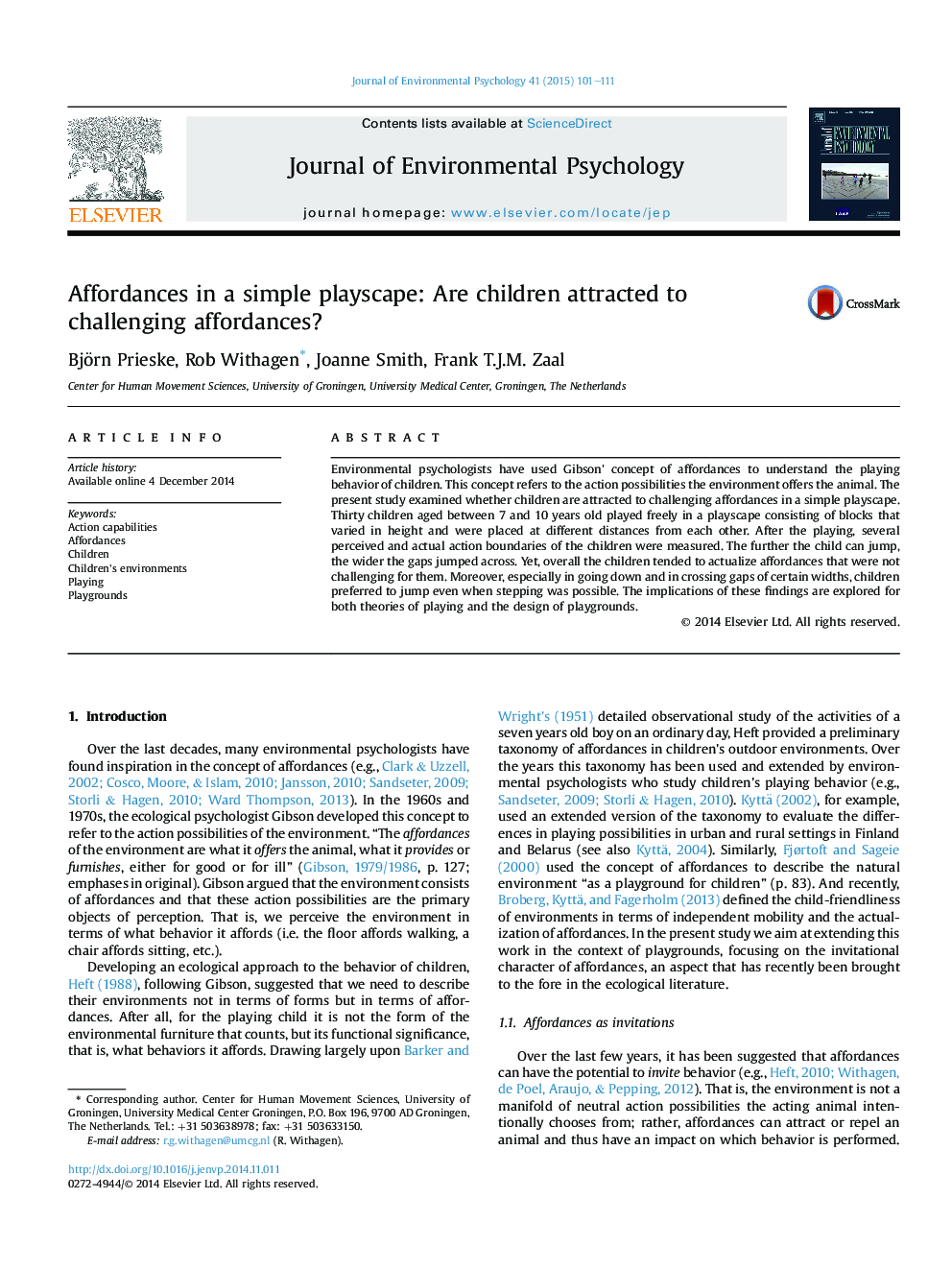| Article ID | Journal | Published Year | Pages | File Type |
|---|---|---|---|---|
| 7245933 | Journal of Environmental Psychology | 2015 | 11 Pages |
Abstract
Environmental psychologists have used Gibson' concept of affordances to understand the playing behavior of children. This concept refers to the action possibilities the environment offers the animal. The present study examined whether children are attracted to challenging affordances in a simple playscape. Thirty children aged between 7 and 10 years old played freely in a playscape consisting of blocks that varied in height and were placed at different distances from each other. After the playing, several perceived and actual action boundaries of the children were measured. The further the child can jump, the wider the gaps jumped across. Yet, overall the children tended to actualize affordances that were not challenging for them. Moreover, especially in going down and in crossing gaps of certain widths, children preferred to jump even when stepping was possible. The implications of these findings are explored for both theories of playing and the design of playgrounds.
Related Topics
Social Sciences and Humanities
Psychology
Applied Psychology
Authors
Björn Prieske, Rob Withagen, Joanne Smith, Frank T.J.M. Zaal,
